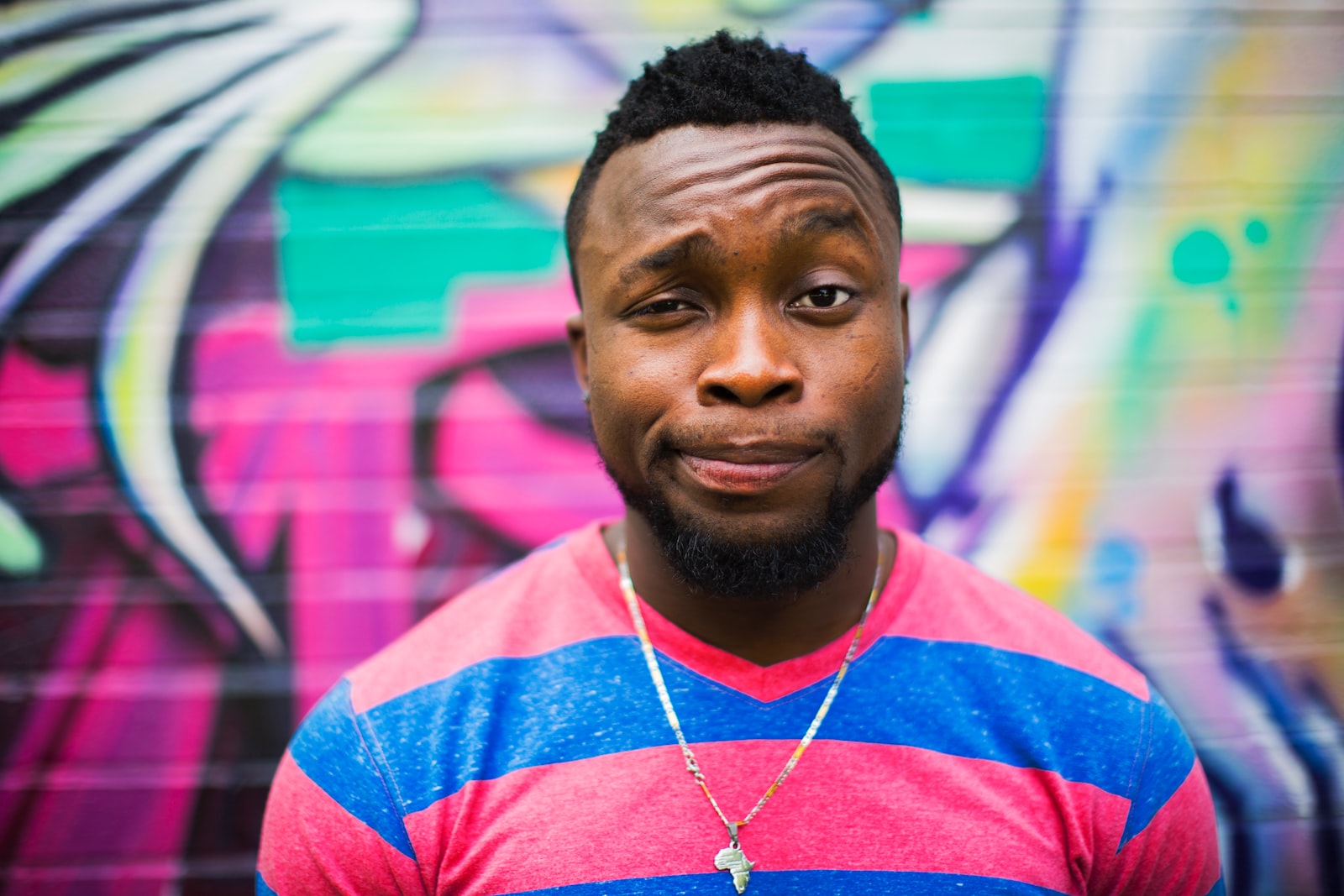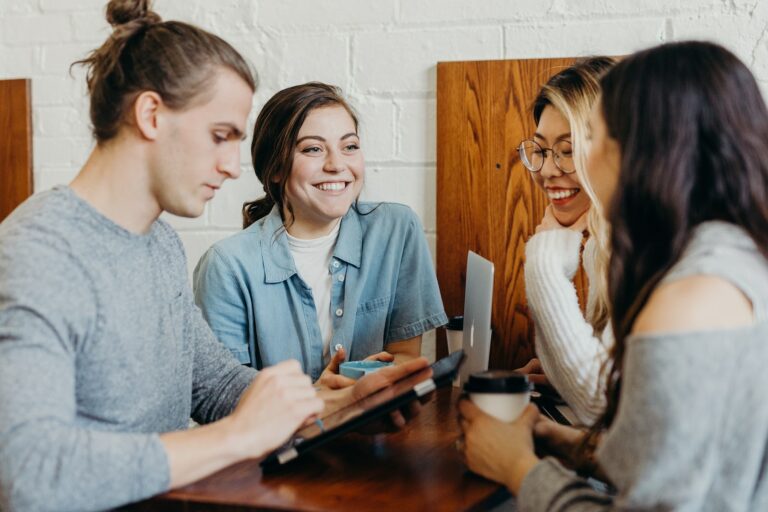Understanding Facial Expressions

Facial expressions play a huge role in how we communicate with each other, but they can often be tricky to decipher. Have you ever found yourself trying to figure out what someone meant when their expression didn’t quite match the words coming out of their mouth? It’s an uncomfortable situation for everyone involved and it doesn’t have to be that way. Understanding facial expressions is key to having meaningful conversations and understanding those around us.
In this article, we’ll look at the basics of reading facial expressions so that you can start decoding them quickly and accurately. We’ll discuss how different cultures view expressions differently and explore some tips on recognizing micro expressions – brief involuntary movements that are hard to catch but carry a lot of meaning. So if you’ve been struggling with reading your friends’ faces or want to brush up on your skills, read on!
Finally, we’ll discuss why it’s important to pay attention not only to what people say but also how they feel about it based on their non-verbal cues like eye contact, body language, posture and tone of voice. With these tools in hand, you’ll soon be a master at decoding any message sent by others clearly and confidently.
Table of Contents
The Impact Of Facial Expressions On Communication
Facial expressions are a powerful form of communication, and can be just as important for understanding the nuances of interpersonal relationships as body language. Facial expressions convey emotions that words often cannot, allowing us to express our feelings without having to use verbal cues. As such, facial expressions play an integral role in how we communicate with one another.
From subtle smiles to angry scowls, facial expressions allow us to quickly gauge someone’s state of mind or emotional reaction to something. While this is especially true in face-to-face conversations, even the briefest glance at someone’s expression can instantly tell us how they feel about whatever topic is being discussed. This makes it easier for both parties in any conversation to understand each other on a deeper level and more effectively get their point across.
In addition, facial expressions also help build trust between two people by providing visual evidence that what is said is genuine and sincere. Through eye contact and small nods of agreement, we can create strong bonds with others based on mutual understanding and respect – all through expressing ourselves nonverbally via our faces!
Understanding these different types of facial expressions is essential for successful communication.
Different Types Of Facial Expressions
Facial expressions are a powerful form of communication that can convey emotions and feelings in an instant. They provide us with the opportunity to express ourselves without having to say a word or explain our feelings. It is important to understand different types of facial expressions, as they can have subtle but meaningful differences from person to person.
There are various kinds of facial expressions we use on a daily basis, such as smiling, frowning, laughing, crying, and more. These all communicate something about how we’re feeling at any given moment. However, even within these basic facial expressions there are variations – for example, someone might smile slightly differently when they’re happy than when they’re sad or amused. Additionally, some cultures may also display different levels of emotion through their facial expression compared to others.
The way people interpret facial expressions is often subjective and context-dependent; what one individual perceives as happiness may be seen by another as anger or sadness. This means it’s essential to pay attention to body language cues too – such as posture and eye contact – in order to gain insight into the true meaning behind a particular expression. With this understanding, we can better recognize our own emotions and those of those around us in order to build stronger relationships and foster empathy. Transitioning into the next section: While certain aspects of facial expression may vary depending on culture or individual circumstances, there are some universal displays which hold true across contexts…
Universal Facial Expressions
Facial expressions are an important way of communicating with others, as they provide insight into our thoughts and feelings. We can express a variety of emotions through facial expressions, but some remain universal across cultures. Universal facial expressions include happiness, sadness, fear, surprise, anger and disgust – all of which we have in common regardless of our cultural backgrounds.
It’s interesting to note that these six facial expressions occur naturally due to us having the same physical responses when something positive or negative happens. For example, when feeling happy or surprised, people will often raise their eyebrows and widen their eyes; while feeling angry or disgusted may lead to furrowed brows and a downturned mouth. These reactions make sense biologically as they help us show how we feel without speaking any words.
Our ability to give away clues about what we’re thinking by using subtle changes in our faces has been around since before humans evolved into Homo sapiens. As such it is no wonder why these non-verbal cues still play an important role in communication today. With this understanding, it’s clear why other aspects of expressing ourselves with our face – like cultural differences – should be taken into account too.
Cultural Differences In Facial Expressions
Facial expressions are a universal language, used to convey emotions and messages. However, cultural differences can also affect how they are interpreted as people from different backgrounds may not express themselves in the same way. It is important to be aware of these variations when trying to understand facial expressions.
For example, some cultures might frown upon an open mouth smile that exposes teeth, which could be seen as overly casual or even insulting. In other cases, certain gestures like nodding your head up and down instead of side-to-side might mean something entirely different than what you intended. Understanding the subtle nuances between different cultures’ interpretations of facial expressions can help avoid potential miscommunication.
By familiarizing yourself with different cultural customs around facial expressions, it’s possible to become more adept at interpreting them effectively. This can lead to better communication with those who have a different background – enabling us to build stronger relationships through understanding each other’s body language. With this knowledge under our belt we can move forward towards exploring how to interpret facial expressions for improved communication.
How To Interpret Facial Expressions To Improve Communication
Interpreting facial expressions correctly is essential for successful communication. To do this, it’s important to be aware of any cultural differences that may exist between yourself and the person or people you are communicating with. While some expressions can be universally understood, others might vary from culture to culture.
Gaining insight into how different cultures express themselves can help you better interpret what someone else is trying to convey. Pay attention to body language and tone as well as words when interacting with someone who comes from a different background than yours. It also helps to ask questions if something isn’t clear, rather than making assumptions based on your own experience.
By taking these steps, we’re more likely to get an accurate understanding of someone else’s feelings and intentions which in turn can lead to improved relations and better outcomes overall. This will pave the way for further conversation about how facial expressions can be used to make a positive impression.
How To Use Facial Expressions To Make A Positive Impression
Making a positive impression with facial expressions is an important part of communication. Many people don’t realize how much their expressions can influence the way they are perceived. By being aware of your own nonverbal cues, you can better understand how others may be interpreting them.
The key to making a good first impression is having confidence in yourself and your abilities. Smiling naturally signals that you’re open and friendly, while frowning or looking away can make it appear as if you’re not interested in what’s going on around you. It’s also important to remember that eye contact plays an essential role; direct eye contact conveys interest, but avoiding eye contact can signal disinterest or even hostility.
Finally, using appropriate body language is also critical for creating a favorable impression. Keeping an upright posture shows respect and attentiveness, whereas slouching or crossing your arms could indicate boredom or insecurity. Being mindful of these subtle cues will help ensure that you’re sending out the right message when communicating with someone else. With practice, mastering these basics will allow you to confidently project positive energy through your facial expressions. From there, we’ll discuss how to continue practicing facial expressions to further improve communication skills.
How To Practice Facial Expressions
Practicing facial expressions can help you make a positive impression and is an important part of understanding them. It’s essential to pay attention to how your face looks when expressing different emotions, in order to ensure that what you’re conveying matches the intended emotion.
One way to practice facial expressions is by looking at yourself in the mirror. Observe your own features and notice any differences between how they appear while displaying various emotions, such as happiness or anger. Pay close attention to eyebrow movement, lip shape, eye shape and size, and jaw tension. These are all key components of facial expression and will give you more insight into how people interpret these cues when interacting with each other.
Another useful exercise for practicing facial expressions is acting out different scenarios with another person or group of people. This allows you to not only observe their reactions but also see how others respond differently depending on the emotion being conveyed through your face. By doing this regularly, it will become easier for you to accurately convey your feelings without having to rely solely on words.
Taking time to practice and hone your skills in recognizing and using facial expressions is essential if you want to be able to create a positive impression in social interactions. With enough practice, soon enough you’ll be able to easily express your thoughts and feelings using just your face!
Frequently Asked Questions
How Does Facial Expression Play A Role In Non-Verbal Communication?
Facial expression plays an important role in non-verbal communication. When we communicate with others, our facial expressions reveal a lot about what we are feeling or thinking. By looking at someone’s face, it can be easier to determine their mood and intentions than by simply listening to them talk. For example, if someone is angry or frustrated, they may furrow their brows or clench their jaw. On the other hand, when someone is happy or excited, they often smile and make eye contact.
Our facial expressions can also help show how engaged we are in conversation. If someone appears uninterested while talking to us, they might have a blank look on their face or avert their gaze from ours. Conversely, when people feel connected with the person they’re interacting with, they tend to smile more frequently and maintain eye contact for longer periods of time.
Understanding these subtle cues that come from our faces helps us interpret messages better during conversations and strengthens relationships between two people. It allows us to connect on a deeper level without having to rely solely on words spoken aloud—which can become misinterpreted all too easily!
What Are The Most Common Facial Expressions?
Facial expressions play an important role in non-verbal communication. They can convey a range of emotions and feelings, from joy to anger. But what are the most common facial expressions? Let’s take a look.
One of the most well known facial expressions is the classic ‘smile’. Smiling conveys positive emotion and happiness and it’s often used to show friendliness or acceptance. Other common facial expressions include frowning, which indicates unhappiness or disapproval; squinting, which implies confusion or uncertainty; and raising eyebrows, which signals surprise or disbelief.
These four basic expressions are found across cultures around the world and they make up much of our everyday non-verbal communication. The meaning behind each expression may vary slightly depending on context, but understanding them can help us better interpret what other people are trying to say without speaking directly.
So it’s clear that facial expressions have great importance in our ability to communicate effectively with one another. Being aware of these basic facial expressions can go a long way in helping us identify how others feel about any given situation.
Is It Possible To Express A Negative Emotion Using Only Facial Expressions?
Facial expressions are a powerful tool of communication. We often use them to express our emotions, such as happiness or anger. But is it possible to communicate negative feelings using only facial expressions? This question has been studied for many years and the answer is yes – in fact, there are several ways to do this.
One way of displaying negative emotion through facial expression is by furrowing your brows and pursing your lips. This can be used to show that you’re feeling angry, frustrated or annoyed. Another way to express negativity with facial expressions is by narrowing your eyes and turning your head away from someone; this could indicate any type of rejection or displeasure. Finally, squinting one’s eyes can also be seen as a sign of disappointment or disbelief.
Overall, it is clear that expressing negative emotions through facial expressions is indeed possible and very common in daily life. In some cases, these subtle signals may even replace verbal communication altogether in conveying how we feel about something or someone. Understanding which nonverbal cues mean what will help us better understand ourselves and others around us.
How Can I Tell If Someone Is Lying Based On Their Facial Expression?
Being able to detect a lie based on facial expressions is an important skill. It can help us in many areas of our lives, from deciding who to trust to understanding someone’s true intentions. But how exactly do we tell if someone is lying by looking at their face?
Unsurprisingly, there are certain signs that indicate when someone may be telling a falsehood. These include avoiding eye contact, averting the gaze, blinking more often than usual, and touching or rubbing the nose or mouth area. Additionally, people may also display tense body language such as crossed arms and legs which suggest discomfort about what they’re saying.
To sum up, being able to read another person’s facial expression accurately can give you valuable insight into their inner thoughts and emotions. By learning to identify the physical cues associated with deception, it will become easier to determine whether or not someone is being truthful.
What Are The Most Effective Ways To Use Facial Expressions To Convey A Message?
Using facial expressions to convey a message can be powerful and effective. It’s important to understand the nuances of different types of expressions, as this will help you communicate more effectively with others. There are various ways that expressing yourself through your face can have a positive impact on how messages are received.
First and foremost, it is essential to use eye contact when conveying emotion or ideas through facial expression. This helps establish trust between the speaker and listener, making them feel connected and understood. Additionally, body language such as smiling or nodding while speaking can add emphasis to what is being said. Facial expressions also allow us to express feelings like anger or joy without needing words – an understanding of which emotions correspond with certain gestures can make all the difference in communication.
Finally, vary your expressions throughout conversations so that you appear engaged and interested in what someone else has to say; for example, by raising eyebrows when something surprises you or furrowing your brows when something confuses you. Being aware of these subtle cues not only allows us to better express ourselves but also enables us to interpret what other people mean even if they don’t explicitly state it aloud. Through using facial expressions we can successfully send our own messages while being attuned to those of others – ultimately leading to stronger relationships built on mutual understanding.
Conclusion
In conclusion, understanding facial expressions is an important part of effective non-verbal communication. Becoming familiar with the most common facial expressions can help us better understand and interact with those around us. We must also be aware that negative emotions may be expressed through facial expression even when no words are said. Additionally, being able to tell if someone is lying based on their expression is a valuable skill as well. Finally, using our own facial expression effectively will allow us to convey messages in situations where talking isn’t possible or appropriate. With practice and awareness, we can improve our ability to read others’ faces and express ourselves clearly without saying a word.


